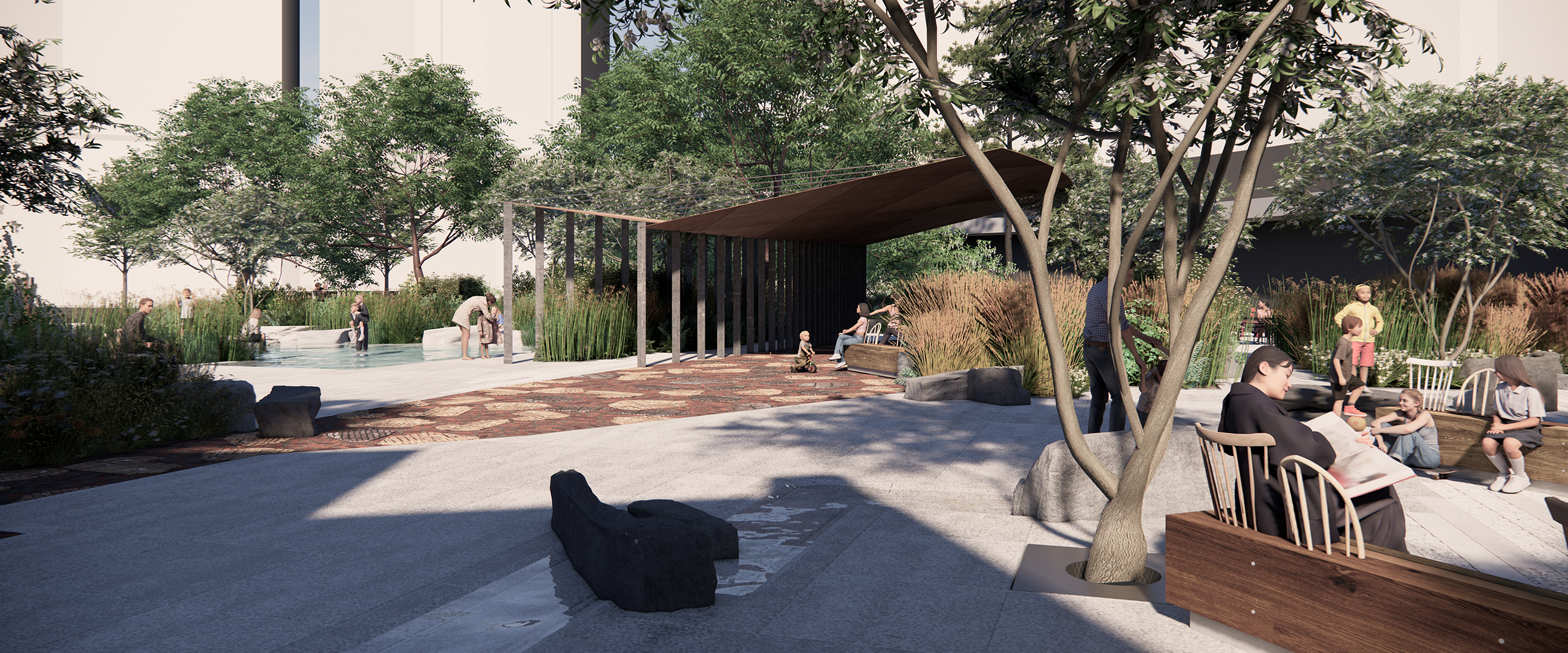I spend every day learning from those who journeyed from afar to live in this land. They all come to me to share their knowledge with those who will lend an ear, and as it turns out, many are eager to listen. Together they learn how to cook, build, tend, how to care for me and each other.
It has been a long time since they removed the brick that once held me in and replaced it with soil, plants, rocks, and walls that contained parts of me. I am now shaded by the trees that grow tall from my centre, nourished by the water that seeps into my soil, and entertained by the friends that they plant in my garden. If I am worn, cracked, or disintegrated, they gather in groups to repair me. I am never lonely, and am always accompanied by children’s laughter, parent’s watchful glances, and grandparents' narratives of time that once was.
It has been a long time since they removed the brick that once held me in and replaced it with soil, plants, rocks, and walls that contained parts of me. I am now shaded by the trees that grow tall from my centre, nourished by the water that seeps into my soil, and entertained by the friends that they plant in my garden. If I am worn, cracked, or disintegrated, they gather in groups to repair me. I am never lonely, and am always accompanied by children’s laughter, parent’s watchful glances, and grandparents' narratives of time that once was.
This re-design of the Yaletown Roundhouse Community Centre landscape exemplifies a future of intercultural and intergenerational exchange. There is a strong chronology of colonial history on the site and consequently an erasure of the land’s significance to indigenous nations as well as the sacrifice of Chinese workers’ lives in the construction of the railroad of which the Roundhouse was the terminus. Our design aims to reconcile these damages through tending to site and sharing across both age and culture.



The driving concept is to create intergenerational encounters by chance, using threshold conditions to create mediating zones between different age groups. These spaces enable autonomy for the users, yet allow for passive exchange of knowledge and opportunities for social connection. Loose program such as gardening, crafting, and play inspire activity that is applicable to a range in age groups.
 “Thresholds as transition points naturally present opportunities to create zones of socialization - the organic mediating zone that arises from two intersecting areas.”
“Thresholds as transition points naturally present opportunities to create zones of socialization - the organic mediating zone that arises from two intersecting areas.”
Kaplan, M., Thang, L.L., Sánchez, M., & Hoffman, J. (Eds.). (2020). Intergenerational Contact Zones: Place-based Strategies for Promoting Social Inclusion and Belonging (1st ed.). Routledge. https://doi.org/10.4324/9780429199097
A large proponent of these passive interactions is our permeable wall feature made of bricks that are made on-site using a mixture of waste material from site maintenance with binding natural substances such as clay. The bricks are not designed to be permanent and will gradually decompose, returning the material harvested back to the land.




Our formal language is driven by archival research into the site; we overlaid the paths of the historic rails onto the site, using their length to create the diameter of circles. The circles are the basis for creating smaller spaces that hold directional energy; two circular spaces are mediated by a circulation path that creates the threshold conditions.




[CONSTRUCTION SET]









